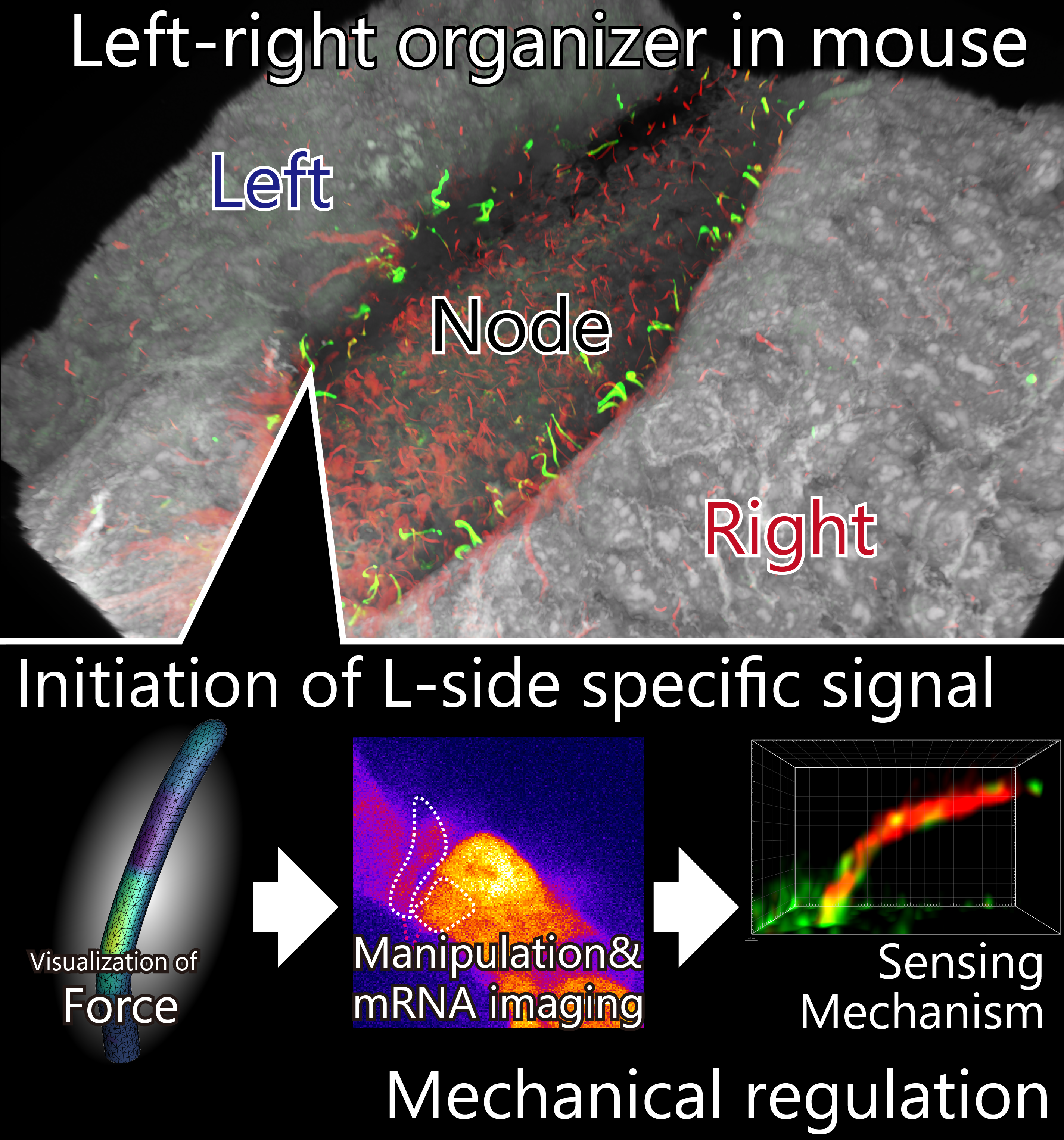1
"Function of nodal cilia in left-right determination: Mechanical regulation in initiation of symmetry breaking" by Takanobu A. Katoh is published in BPPB as the J-STAGE Advance Publication.
2024 September 06 BPPB
A following article is published as the J-STAGE Advance Publication in "Biophysics and Physicobiology".
Takanobu A. Katoh
"Function of nodal cilia in left-right determination: Mechanical regulation in initiation of symmetry breaking"
URL:https://doi.org/10.2142/biophysico.bppb-v21.0018
- Abstract
- Visceral organs in vertebrates are arranged with left-right asymmetry; for example, the heart is located on the left side of the body. Cilia at the node of mouse early embryos play an essential role in determining this left-right asymmetry. Using information from the anteroposterior axis, motile cilia at the central region of the node generate leftward nodal flow. Immotile cilia at the periphery of the node mechanically sense the direction of leftward nodal flow in a manner dependent on the polarized localization of Pkd2, which is localized on the dorsal side of cilia. Therefore, only left-side cilia are activated by leftward nodal flow. This activation results in frequent calcium transients in the cilia via the Pkd2 channel, which leads to the degradation of Dand5 mRNA only at the left-side crown-cells. This process is the mechanism of initial determination of the left-side-specific signal. In this review, we provide an overview of initial left-right symmetry breaking that occurs at the node, focusing mainly on a recent biophysical study that revealed the function of nodal immotile cilia using advanced microscopic techniques, such as optical tweezers and super-resolution microscopy.





